
My Top 10 Games of “2017”
By Brian • 18 January 2018
You may recall my Top 10 Video Games of “2016” post from last year, which was a pretty easy list to assemble, considering I only finished ten games or so in 2016. But, as you may also recall from my year-in-review post from the beginning of this year, I beat over 20 games in 2017, almost all of which I thought were a lot of fun, so putting together a list of my 10 favorites was as anxiety-inducing as cutting people off a guest list. Despite these hard decisions, I am compelled to make my Top 10 Video Games of “20XX” list a tradition (unlike any other) on this No Good Blog!
Remember, the games on this list didn’t have to be released in 2017 (hence the quotation marks), just that I either beat them or played the majority of them in 2017. Because let’s be honest: I’m a filthy casual and don’t have the funds, time, deprivation of sleep, or hardcore gaming prowess necessary to play and finish ten new releases in a year. But, believe it or not, there might be a couple of 2017 games here. That’s right. Your ol’ pal Brian is teetering on the cutting edge of gaming.
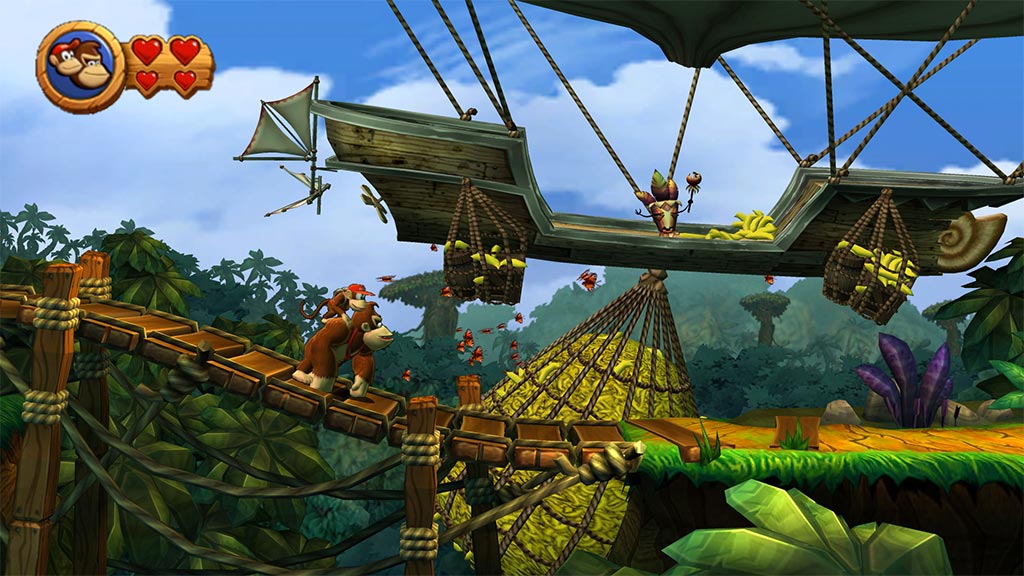
Honorable Mention: Donkey Kong Country Returns (Wii, 2010)
Of all the games left off my top 10, Donkey Kong Country Returns is the one I felt the worst about cutting, so I’ll include it as this year’s honorable mention. It’s also worth mentioning that it was squeezed out of the top 10 by not one, but two other games in the Donkey Kong Country franchise, which I would like to believe lessens the blow just a bit. It has most of the same gameplay conventions as the SNES Donkey Kong Country games, is extremely pretty, and has lots of creative and demanding platforming. But somehow, it didn’t capture my attention as well as its predecessors. I think this one may have simply been too long, and the number of collectibles is much higher than in the SNES trilogy, so exhaustion set in by the time I got to the end. I still need to go back and get all the stuff I missed, of which there is a lot. This also reminds me that I need to get around to playing Donkey Kong Country: Tropical Freeze, which is said to be an improvement on Returns in almost every way.
Nevertheless, if you are a fan of the DKC games, high-stress platforming, pretty games, or collect-a-thons, Donkey Kong Country Returns is worth a look.
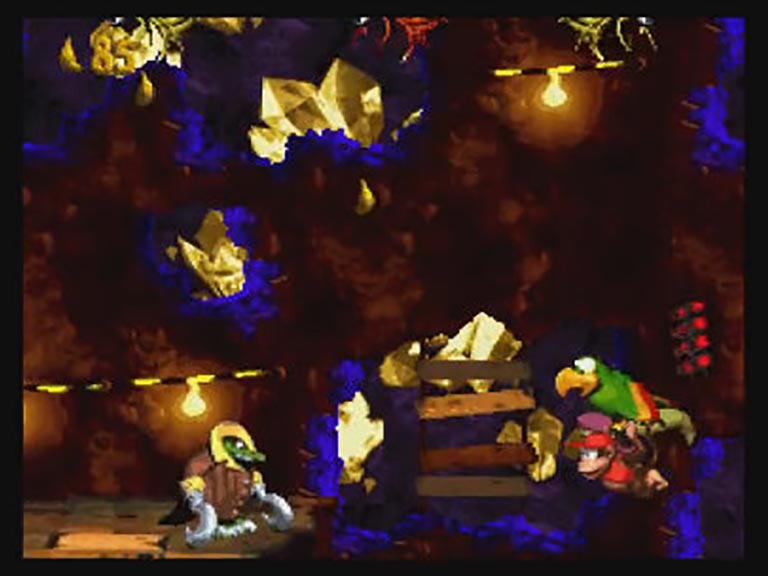
10. Donkey Kong Country 2: Diddy’s Kong Quest (SNES, 1995)
I avoided this game for a long time because I was just too cool and “didn’t want to play as Donkey Kong’s dumb sidekicks.” Amanda, however, is a big fan and has championed the game since we met. I, a lovestruck fool, allowed my stance on the game to soften at her insistence, and when I found a copy for sale at Cape Comic Con (at a reasonable price, at that), I bought it mostly for her, but also so I could give it a shot. Begrudgingly, I will admit that not only is Diddy’s Kong Quest a fine game in its own right, I also found it superior to my beloved, original Donkey Kong Country. It’s a sequel that expands and improves upon the original formula. You know, what a sequel is supposed to do!
What does Diddy’s Kong Quest have going for it? The bosses are less repetitive, more interesting, and more challenging. Secret areas are better-placed and better hinted-at, and depend less on blind jumps into random bottomless pits. The music is better, even better than the wonderful score of the original, and more atmospheric, too. Finally, the addition of Dixie Kong and her propeller jump give her a decided advantage over Diddy Kong in some situations, while Diddy remains the go-to Kong in others. The only real difference between Donkey and Diddy in the first game was that Donkey was heavier. *DKC 2 *is a sequel done right.

9. Mario + Rabbids: Kingdom Battle (Switch, 2017)
If there’s a single, definitive piece of evidence that I am an unabashed Nintendo homer and apologist, Mario + Rabbids: Kingdom Battle is it! Take the Rabbids, a franchise I have historically been lukewarm on, at best, and add Mario characters to it, and all of a sudden I’m on board! Disgusting.
But anyway, hey! This game is really good, and I’m not even into turn-based, tactical combat all that much. My friend Taylor let me borrow it, and I worked my way through it over the last three months or so. One of my favorite things about it is the variety of characters available (Rabbid Peach was apparently my favorite), and the fact that I found myself using them all almost equally. I’m notorious for only using a handful of characters over and over in games with a wide selection. Final Fantasy VI, for instance, has 14 playable characters or whatever. That’s a lot of people to maintain, which is why I always get to the end of the game with four level 50 characters, and the rest are all at level 20. Whoops! On the other hand, Mario + Rabbids is so well put-together that every character and skillset is useful in the right situation. It helps that all your characters level up at the same time, too, which eliminates the need to spend a bunch of hours grinding just to keep them all up to speed. Plus, the writing and comic relief are superb, and the story is full of references to the history and games of the Mario franchise. It was a delightful and surprising addition to my top 10.
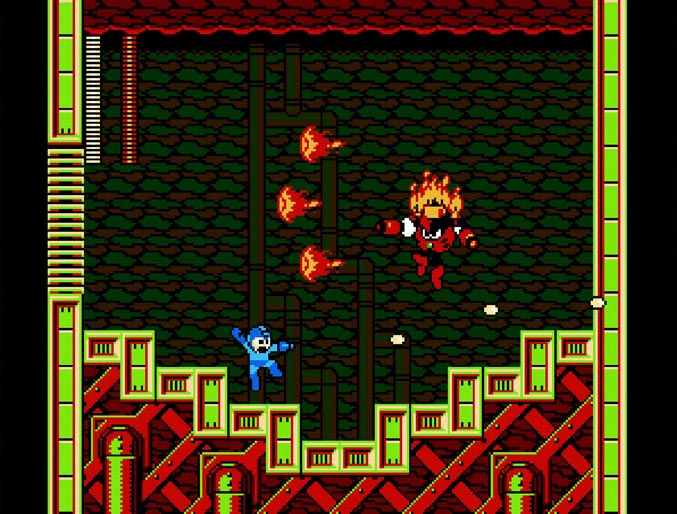
8. Mega Man 9 (Xbox 360, 2008)
2008 was such a big year for games that people like me are still trying to catch up. Then again, I’m still catching up on my games from 1991, so 2008 isn’t even on my radar, yet. But hey, there’s no better position to be in than having 27 years of good games to catch up on, so bring ’em on.
Mega Man 9 was the first new mainline Mega Man game in 12 years, and it was refreshing to see the game made in the classic Mega Man 2 style: no sliding, no Mega Buster. Just a basic, 8-bit fighting robot who has to earn everything he gets by defeating robot masters. It’s not quite on the level of Mega Man 2 or 3, but its creative level design (Hornet Man’s plant aesthetic sticks out, in particular) and fresh weapon ideas (the Hornet Chaser, Concrete Shot, and Black Hole Bomb are out-of-the-box weapons with many interesting uses) put it at least on the level of 4, 5, and 6, and probably make 9 even a bit better than certain sections of those games.
My one critique? Mega Man 9 may actually be a bit too hardcore in delivering an authentic, old-school gaming experience, as it even requires you to enter the pause menu to change weapons, rather than allowing use of the shoulder buttons to quickly cycle through weapons, which was introduced in Mega Man X, I think. There’s also no saving allowed within Dr. Wily’s castle—if you quit mid-castle, you are taken back to the beginning and must replay the entire castle, much like in the NES Mega Man installments. I appreciate the attempt at creating such a classic experience, but since we have modern amenities like shoulder buttons and saving, I don’t see any harm in implementing such time-saving features in a retro-styled game. I got a job! I got kids! (Well, *a *kid.) I’m much more interested in seeing the end of my games than re-capturing that “NES-hard” frustration.
Most importantly, Mega Man 9 scratched that classic Mega Man itch nagging me since 1993’s Mega Man 6. It captures the look and feel of those old games almost perfectly, and is a welcome addition to the storied, but troubled, franchise.
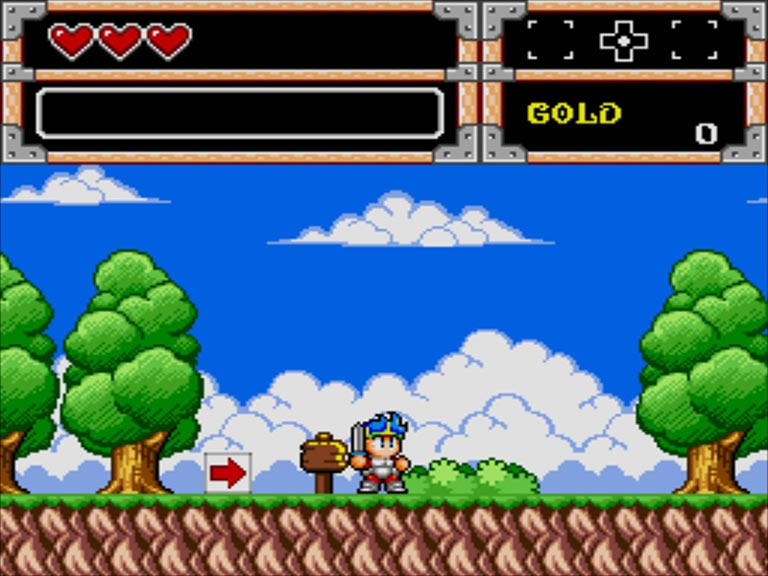
7. Wonder Boy in Monster World (Sega Genesis, 1991)
I first discovered this Sega Genesis gem by renting it from Blockbuster Video quite a long time ago. Even though I got stuck really early in the game, I enjoyed my weekend with it enough that I’ve always wanted to revisit it, and finally took the opportunity to do so this year by way of the Sega Vintage Monster World Collection on Xbox 360. It’s an exploratory sidescroller (or Metroidvania, if you will) with some pretty cute art direction and enemy designs. I found myself not wanting to kill the enemies so I could admire their sprites just a little longer, but then they would start to tear me limb from limb, so I did what I had to do. The world map is also well designed, with all of the areas centered around a town and castle that act as a central hub. This comes in handy late in the game when backtracking for treasures and areas that were inaccessible in the early game. It’s well done and feels ahead of its time. A few of the puzzles were a bit too dense for my limited brainpower to overcome without a gentle nudge in the right direction from the internet, but nothing too outlandish. A wide selection of weapons and items at shops scattered around the world keeps your attacks and strategies fresh, and the game is paced well enough that you don’t need to grind too long to buy what you need.
This seemingly innocent game ratchets up the difficulty to a staggering degree late in the adventure. The last couple of enemy strongholds feature tough bad guys like yetis and dragons, as well as insane platforming sequences with no room for error. One of these trials even requires you to face a dragon mini-boss as punishment every time you mess up and fall into the pit below. After screwing up the platforming and fighting that dragon about a dozen times, I was happy to abuse the Xbox 360 collection’s save-anywhere function to save myself some time and frustration. I was also underpowered when battling the final boss. In hindsight, I wish I had taken the time to procure more heart containers to shift the balance of power more into my favor, but I was so close to the end that I elected to brute-force my way to victory, enduring a good ten or fifteen deaths before finally coming out on top.
This is my first foray into the Wonder Boy series, and I had more than enough fun with this game to pique my curiosity about others in the series. Onward!
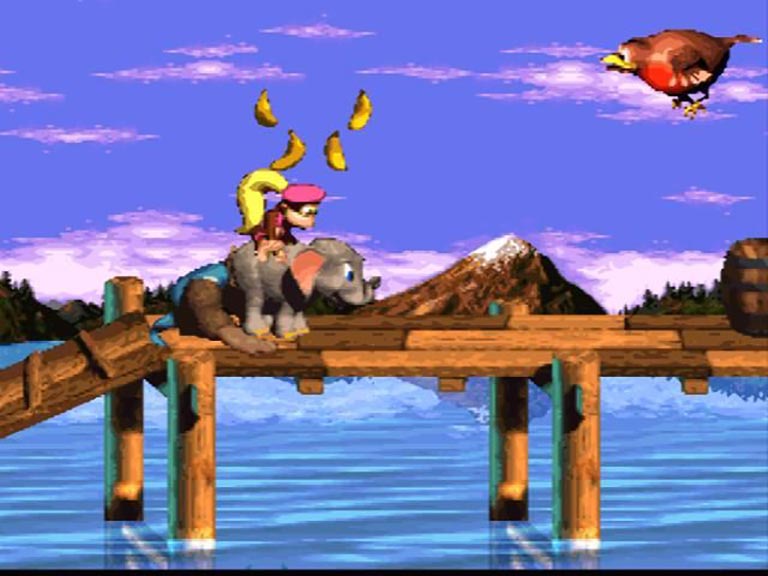
6. Donkey Kong Country 3: Dixie Kong’s Double Trouble (SNES, 1996)
Here’s a controversial hot take sure to have the hysterical internet masses gnashing their teeth: I like DKC 3 more than DKC 2. Whoa. How contentious of me. It has all of the same positive qualities of DKC 2, and even though it might not be technically as good as its predecessor, Dixie Kong’s Double Trouble might be my personal favorite. Its colorful settings, like lakeside piers, snowy hills, and rushing waterfalls are much cheerier and livelier than DKC 2’s dark swamps, deep forests, and K. Rool’s dreary castle. I also like DKC 3’s free-roaming world map, and the fact that you can find secret areas on the world map with a little bit of exploration. It makes the world seem that much more open and expansive. Plus, the bosses are the most interesting yet. Everything else is executed about as well as in DKC 2; it’s the little things that put Dixie Kong’s Double Trouble over the top.
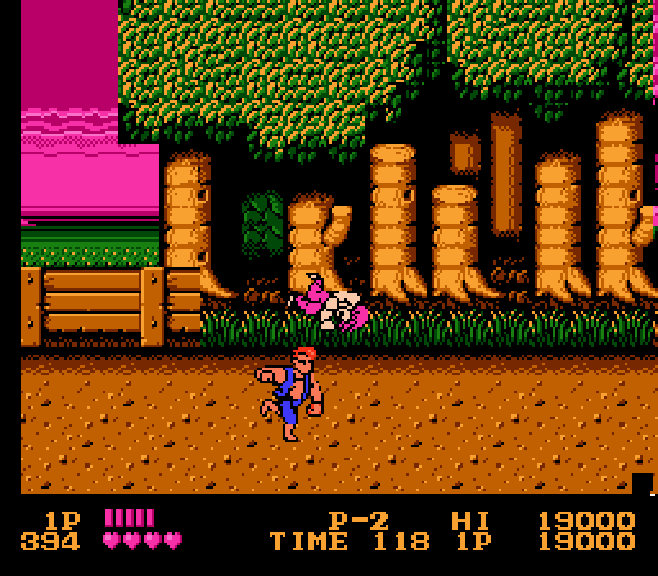
5. Double Dragon (NES, 1988)
I understand that most people prefer Double Dragon II: The Revenge due to the original’s lack of 2-player co-op and unusual leveling system, but the first NES Double Dragon has always been my favorite of the two, as well as one of my favorite beat-em-ups (and probably also my first beat-em-up, if I had to guess). If I was able to have a partner in this game, I’d probably accidentally throw them off a bridge, anyway. I prefer the music and aesthetic of the original, and Revenge has this weird control scheme in which the A and B buttons switch between punch and kick, depending on the direction the player is facing. I never adjusted to that, and even though the original doesn’t have great controls to speak of, either, I feel more comfortable with it, like the endearing clunker that only I know how to drive.
NES Double Dragon is, without question, a different breed of beat-em-up. It requires a lot of patience and strategy and luck, as you have just three lives and no continues to beat the game. Every movement must be deliberate, which complicates matters because you also have a time limit working against you. If you haven’t played it before and want an idea of the difficulty, I’ve been playing Double Dragon off and on for, oh, 28 years now, and I finally beat it for the first time in 2017, overcoming its grueling 6-part final battle gauntlet, including that cheating Machine Gun Willy. Who do you think you are, Willy?! Bringing a machine gun to a fight in which everybody else is punching and kicking?! Come on!
Ahem. Anyway. All that frustration over the years was worth it. Double Dragon is a real challenge, but so much fun every time.

4. Batman (NES, 1989)
Ah, another absurdly difficult NES game that I beat for the very first time in 2017! Unlike Double Dragon, I avoided this game for many years out of sheer intimidation—I simply didn’t want to deal with the last level. It’s so hard on its own, full of well-placed enemies and grinding gears, but then it culminates in a brutal 2-part final boss battle with Firebug and The Joker. Firebug is bad enough on his own, but the Joker is one of the toughest final bosses in gaming history. I beat him on the 4th of July, and as far as I was concerned, the fireworks we watched that night weren’t just in celebration of our nation’s independence, but also of me sending that scumbag to dance with the devil in the pale moonlight.
Batman is a great game because, to be successful, you have to think and move like Batman. If you try to steamroll through levels, you’ll never succeed. But, if you approach each situation strategically and methodically, maintaining a slow pace while taking advantage of Batman’s equipment, the environment, and precise controls, the best route around each hazard will often present itself to you. Plus, the music is fantastic, which is to be expected from pretty much any NES game from Sunsoft and composer Naoki Kodaka. Every track has this sort of echo or reverb that makes all of the areas you visit feel immersive and somehow more authentic, as if you’re really there and the music is bouncing off the walls around you. Every song adds to the excitement and the already-engaging atmosphere.

3. Streets of Rage (Sega Genesis, 1991)
Being a fan of beat-em-ups and not giving Streets of Rage the time of day until last year was a grievous error. What a fool I’ve been. I can’t believe I waited so long to risk everything, even my life, on the Streets of Rage. I can honestly say I’ve never had so much fun beating up Miami coke dealers. Trust me. I play video games. I’ve beaten up a lot of Miami coke dealers.
Like Double Dragon, this is another console beat-em-up in which you can’t just insert more quarters to keep yourself going. You get a lot of lives and continues, but it doesn’t matter. The game is still hard. It requires patience and strategic wailing on deadbeats if you plan to make it to the end. Lead pipes are helpful, too. Not to mention practice. I gradually worked my way up to being able to finish level four, then five, then six, and so on, finding new ways to defeat clusters of enemies without losing any health, or completing a level with one less life lost along the way. I finally reached the final level, where I got stuck for a while because there’s a boss rush, and you have to fight the crazy twin martial arts girls boss from level four again, and they seem even tougher than before! But then, I consulted the instruction manual and learned how to recover from being thrown by enemies, and it made the fight significantly easier. Knowledge! Oh, and that fire-breathing guy, too! Ugh! What a jerk!
*Streets of Rage *is also frequently praised for its amazing soundtrack. The whole thing is on YouTube, and you’re going to want to go ahead and listen to it now, and then every day for the rest of your life.
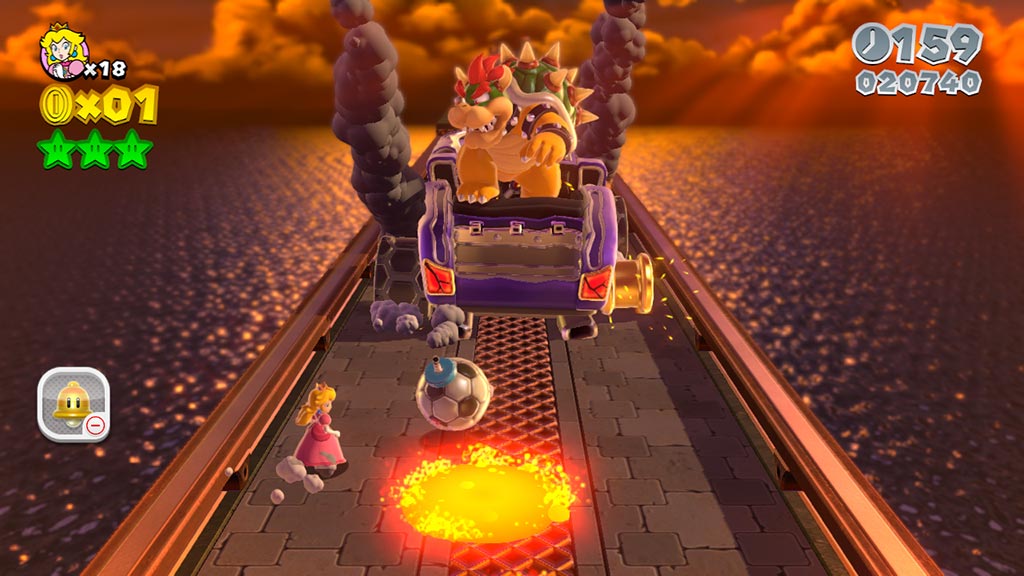
2. Super Mario 3D World (Wii U, 2013)
Super Mario 3D World (and its 3DS counterpart, Super Mario 3D Land) are what I always hoped for from a 3D Mario game: a course-based adventure in the traditional Mushroom Kingdom setting, with leaf and fire flower power-ups unrestricted by gates or time limits, bricks and question-mark blocks, plenty of goombas to stomp and pipes to traverse, and so on. As much as I love the Super Mario Galaxy games and how they rewrote the rules of 3D platforming, Super Mario 3D World is the 3D Mario game of my dreams. There are a multitude of beautiful and creative levels to explore, deviously placed secrets to unearth, and the opportunity to play as Toad will always earn a game high marks from me. I also dig the casino motif of Bowser’s castle—as often as Nintendo feeds that brute to us, any fresh take on the King of the Koopas is welcomed and appreciated.
The variety of gameplay here is staggering. The numerous power-ups at your disposal (leafs, fire flowers, boomerangs, cat suits, double cherries, and so on) keep things interesting and give you numerous means of dealing with a given situation. Types of levels range from traditional courses to puzzle levels to speedrun levels and more. The Captain Toad levels are cool enough that he ended up getting his own game. Even the music, which is typically not a strong suit of Mario games, in my opinion, inspired me to put together a YouTube playlist of my favorite tracks from the game. And while I technically “beat the game,” I know there is so much more I’ve yet to uncover. This isn’t my first walk around the block—I know Nintendo loads up its franchise player with plenty of replay value in every outing.
If you missed this game, pray for a Switch re-release. Super Mario 3D World went criminally underplayed, and it deserves your attention.
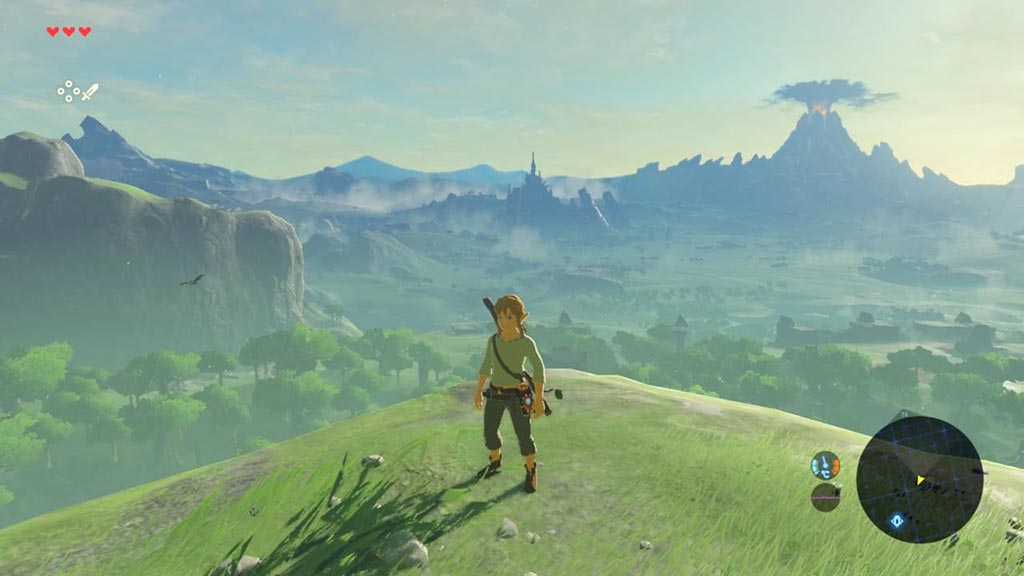
1. Legend of Zelda: Breath of the Wild (Switch, 2017)
I know that I occasionally get caught up in the idea of beating as many games as possible. I’ve droned on and on about this giant backlog of games and how I need to beat all of them and catch up. My intentions are good, but I think I sometimes lose sight of what games are all about: fun. I forget to have fun, and forget to appreciate what I have, and only beat a game for the sake of moving on to the next one. It defeats the purpose. The game simply becomes another tally in the book, rather than an adventure that I will remember for a long time.
However, occasionally a game will come along that is so mesmerizing and so immersive that I forget about trivial things like backlogs and “beating” games almost entirely. And I just play. I don’t worry about statistics or how many hours I’m putting in, or about the need to finish within a reasonable amount of time so I can move on to the next game. It allows me to re-focus on what’s important: fun. Legend of Zelda: Breath of the Wild is such a game. I allowed myself to get lost, both in the game and in real life. I saw strange things at the tops of nearby mountains, wondered, “Wow! What is that?” and started climbing. I would set out on a quest, get sidetracked by a shrine in the distance, then spot a curious ruin beyond that, and before I knew it, I managed to sidetrack my way completely to the other side of the map from where I started. I would meticulously plan a daring sneak attack on an enemy camp, only to have it blow up in my face (sometimes literally) and find myself running for my life from a band of shrieking Bokoblins. I would spy a conspicuous spot on my map and race there with my heart pounding in my chest, knowing for sure something of great importance waited for me, only to find a Korok seed or a chest with 10 arrows in it as my prize. I don’t think I’ve ever had so much fun just futzing around in a game before. It was wonderful to take a step back from objective-driven gameplay and just explore and get lost for a while. Breath of the Wild does ultimately have a final destination, but the road to it is long and winding and pretty washed out in a lot of places, so there is plenty of opportunity to lose the road, but find a world of possibilities.